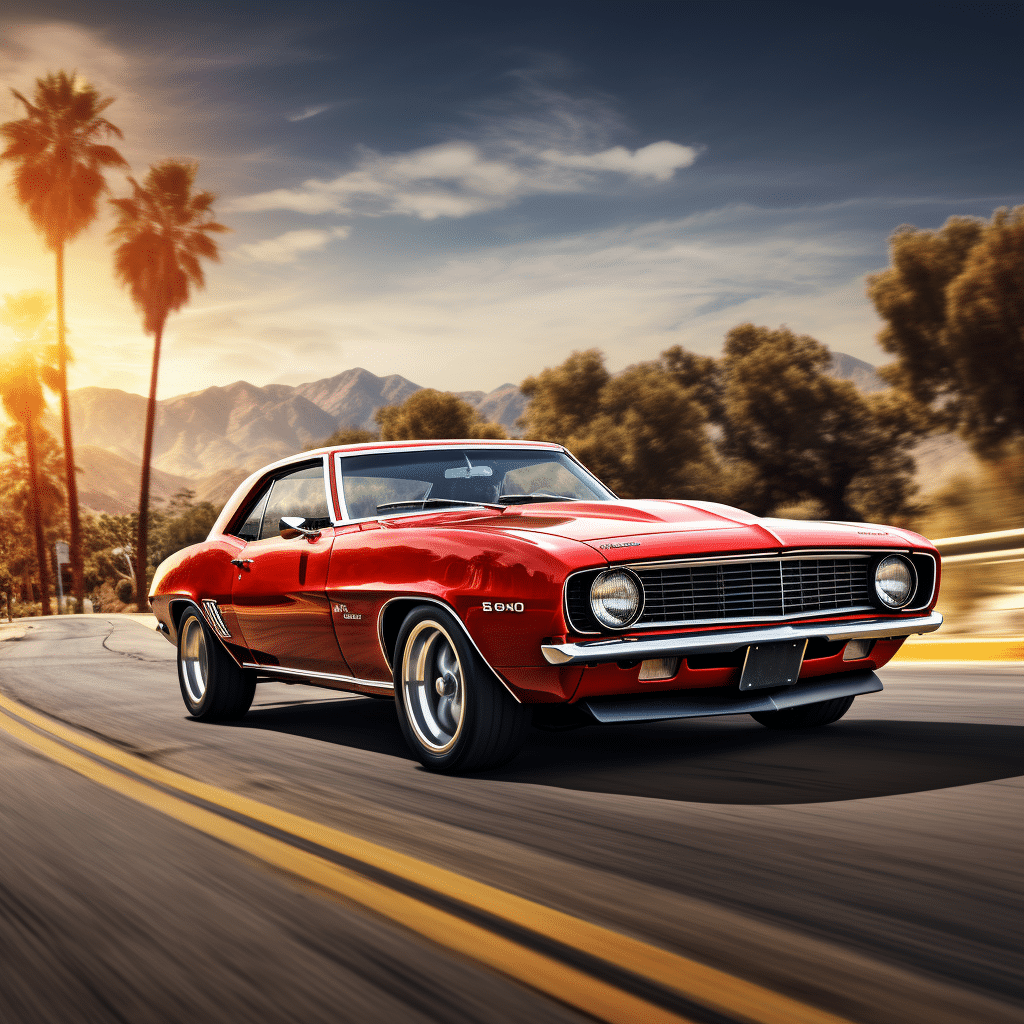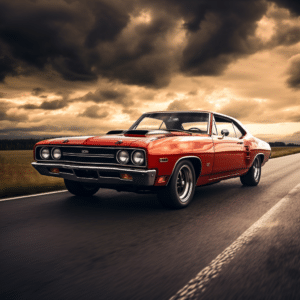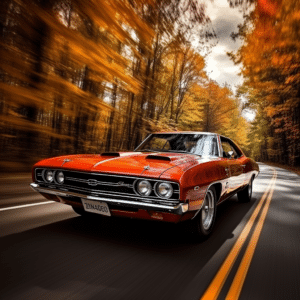
Revving Through 1969: Iconic Muscle Car Marvels
The 1960s brought forth an unforgettable era in car history: The Muscle Car era! These powerful and flashy cars were an iconic symbol of American performance. Ford, General Motors, and Chrysler produced the most legendary muscle cars with massive engines that could reach extreme speeds. These automobiles’ striking shapes, powerful lines, and vivid paint treatments stood out, from the Ford Mustang to the Chevrolet Camaro.
The Dodge Charger Daytona is a true testament of this era. To win NASCAR races, Dodge engineers designed a special aerodynamic package for their Charger model. It had a huge rear wing and a sharp nose cone. This design made the Charger Daytona faster than ever before. In the 1969 Talladega Superspeedway race, Buddy Baker drove a Charger Daytona to victory at an average speed of over 200mph. This record-breaking feat solidified Dodge’s reputation and established muscle cars as unbeatable speed machines.
So rev up your engines, because these muscle cars from 1969 are hotter than hellcats and faster than a cheetah on Red Bull!
Popular Models of Muscle Cars in 1969
To explore popular models of muscle cars in 1969, delve into the Chevrolet Camaro SS. Discover the unique features and history behind this iconic vehicle, alongside other sub-sections.

Chevrolet Camaro SS
The Chevrolet Camaro SS roused excitement with its V8 engine, delivering unparalleled speed. Its daring exterior and smooth interior earned it a place among muscle car favorites. It had a sophisticated suspension system, providing incredible handling and cornering. Plus, high-performance brakes for controlled stopping power. Even more, its custom exhaust created an intimidating roar.
The Camaro SS stood out for its combination of power, style, and performance. Owning one today requires regular maintenance, performance upgrades, proper storage, and safe driving. Adhering to these tips keeps the car running smoothly, preserving its value and enjoyment.
Iconic Features of Muscle Cars from 1969
To understand the iconic features of muscle cars from 1969, delve into the high-performance V8 engines. Experience the raw power and exhilarating performance that these engines delivered. Appreciate the engineering marvels responsible for the thunderous roars and mind-blowing acceleration. Witness how these engines paved the way for the legendary status of muscle cars from 1969.
High-performance V8 Engines
These high-performance V8 engines are renowned for their V-shaped cylinder configuration and eight cylinders arranged in two banks at an angle. Their horsepower output and torque make them capable of propelling muscle cars from 0 to 60mph in seconds.
Advanced technologies such as fuel injection systems, turbocharging, and supercharging enhance their performance. The sound these engines produce is unmistakable and captivating – a deep rumble and throaty roar that excites car enthusiasts.
Durable materials and engineering methods are used to build the engines. Polished valve covers, chrome highlights, and elaborate intake manifolds show great attention to detail.
Previous versions had worse fuel efficiency, demonstrating the car industry’s ongoing power production and environmental conscience improvements.
In 1969, Car and Driver magazine tested Chevrolet’s Camaro Z28 with a high-performance V8 engine and achieved an impressive quarter-mile time of 14 seconds at 102mph (164 km/h). Muscle vehicles continue to show that speed and power can be deadly sexy on the highways!

The Influence and Legacy of Muscle Cars from 1969
1969 – a defining time for muscle cars! Churning out formidable power and an aggressive look, they became a global sensation among car lovers.
- Unrivalled Strength: Big engines and high-performance capabilities gave these cars immense horsepower, setting them apart from the rest.
- Innovative Tech: Fuel injection systems and advanced suspension were pioneered, beating all expectations of performance and handling.
- Cultural Impact: These cars were symbols of freedom, rebellion, and personality. Steve McQueen’s Mustang GT fastback in “Bullitt” was a popular example.
- Enduring Effect: Modern sports cars still follow the example of these classic models, honoring their influence on automotive design.
Design-wise, they had wide tires, bold stripes, and grilles that commanded attention. Fiberglass was used to enhance speed and agility.
The impact of 1969 muscle cars is undeniable – even after so many years, their power and appeal stand strong.
Pro Tip: When restoring/maintaining these cars, always opt for original parts for an authentic representation of their history.
